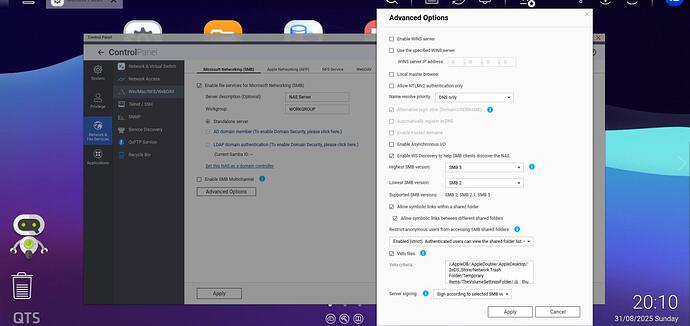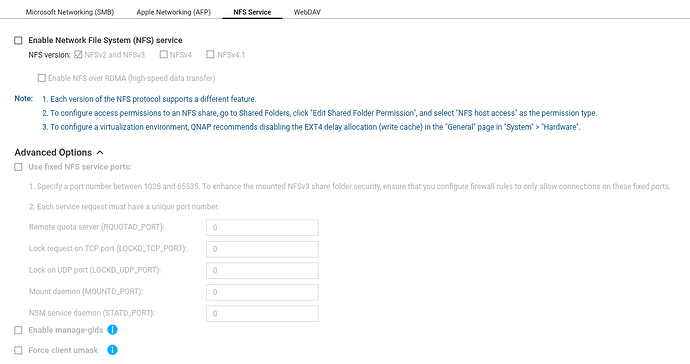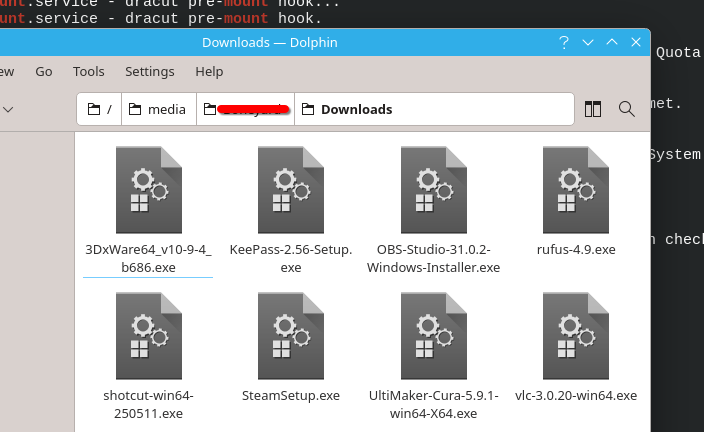Hi Folks,
I have Searched the forum for my issue and found nothing related or helpful
I have checked the Resources category (Resources Index)
I have reviewed the Wiki for relevant information
I have read the the Release Notes and Errata
I have asked my cat nicely
OpenMandriva Lx version:
Lx 6.0 (Vanadium) Rock x86_64
Desktop environment (KDE, LXQT…):
KDE
Description of the issue (screenshots if relevant):
I’ve started this thread to ask for help correctly mounting my NAS drive for regular read/write access to mimic the way it works on my windows PC’s. I’ll have to apologise for a little confusion on my part here: I spent the best part of yesterday afternoon trying to get this to work with little success, but now that I’m ready to take screenshots for this thread, it seems to be just working?!
Everything I did yesterday seemed to result in repeatedly booting to a system with an unmounted drive and journalctl log errors something like “Mount process exited, code=exited, status=32/n/a”. If I would then enter the terminal command “sudo mount /media/____”, the drive would then mount and work correctly. This led me think that the issue was related to the network online status flag, hence the question I posted yesterday. When I reboot now, the NAS drive remains mounted correctly, so maybe the issue is already solved? What changed since yesterday - was it the symlinks after all? I’ll post the relevant info below, hopefully something useful can come from this discussion anyway.
Relevant informations (hardware involved, software version, logs or output…):
# /etc/fstab: static file system information.
#
# Use 'blkid' to print the universally unique identifier for a device; this may
# be used with UUID= as a more robust way to name devices that works even if
# disks are added and removed. See fstab(5).
#
# <file system> <mount point> <type> <options> <dump> <pass>
UUID=34C5-1F16 /boot/efi vfat defaults,noatime 0 2
UUID=48a6f919-2da8-451f-98b5-de291ef2517c / ext4 defaults,noatime,discard 0 1
UUID=9e10bcd2-b7e6-47c6-a46f-387b70baf7d6 /home ext4 defaults,noatime,discard 0 2
tmpfs /tmp tmpfs defaults,noatime,mode=1777 0 0
#NAS drive added by me 24/8/2025:
//10.1.x.x/____-share /media/____ cifs cred=/root/.smbcred,dir_mode=0777,file_mode=0666,nounix,vers=3.0,nofail,_netdev,x-systemd.device 0 0
[____@____ ~]$ systemctl --type=service
UNIT LOAD ACTIVE SUB DESCRIPTION >
accounts-daemon.service loaded active running Accounts Service
alsa-restore.service loaded active exited Save/Restore Sound Card >
blk-availability.service loaded active exited Availability of block de>
cups.service loaded active running CUPS Scheduler
dbus-broker.service loaded active running D-Bus System Message Bus
dracut-shutdown.service loaded active exited Restore /run/initramfs o>
irqbalance.service loaded active running irqbalance daemon
kmod-static-nodes.service loaded active exited Create List of Static De>
lvm2-monitor.service loaded active exited Monitoring of LVM2 mirro>
NetworkManager-wait-online.service loaded active exited Network Manager Wait Onl>
NetworkManager.service loaded active running Network Manager
plymouth-quit-wait.service
Aug 31 19:08:31 ____ systemd[1]: Mounted home.mount - /home.
Aug 31 19:08:38 ____ systemd[1]: Mounting media-____.mount - /media/____...
Aug 31 19:08:38 ____ kernel: CIFS: Attempting to mount //10.1.x.x/____-share
Aug 31 19:08:38 ____ systemd[1]: Mounted media-____.mount - /media/____.


